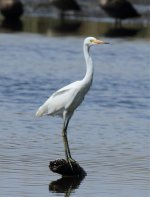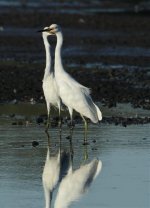bittern
Well-known member

While I was in Luzon, Philippines, I noticed several Little Egrets with black feet, (not mud!). The Field Guide to the Birds of the Philippines, Kennedy et al, does not mention this nor had any local birders present noticed it before. A person present with a Japanese field guide found a mention of a ssp with black feet present in Java and the Philippines. Anybody know more about these birds that the Japanese guide referred to as negripes ?
Mike
Mike





